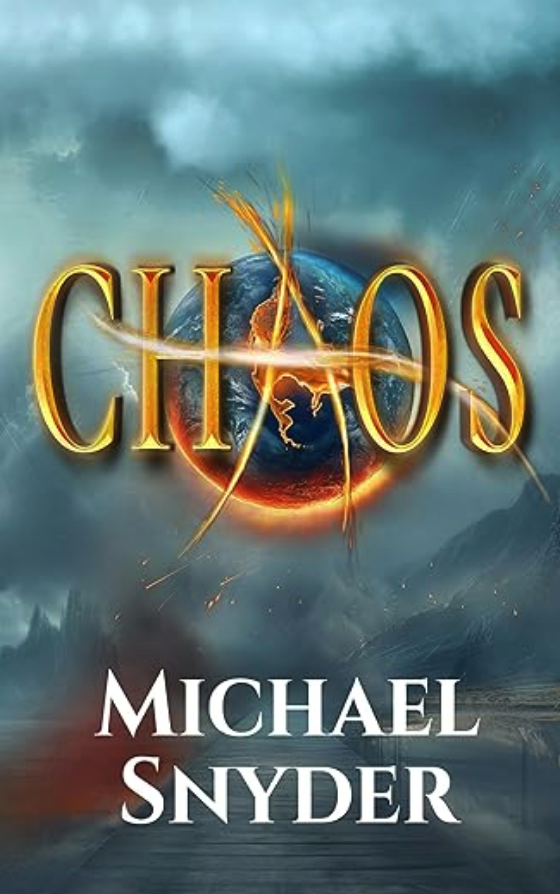St. Patrick really existed, and the ripple effects of what he accomplished during his lifetime are still being felt today. Sadly, very few people know the true story of this remarkable man. If you have a few moments, please let me share that story with you. Once you understand what really happened, you will never view St. Patrick’s Day the same way again. Today, most people regard St. Patrick’s Day as an excuse to wear green and get drunk. According to Wikipedia, St. Patrick’s Day is celebrated in more nations “than any other national festival”…
Saint Patrick’s Day is a public holiday in the Republic of Ireland,[13] Northern Ireland,[14] the Canadian province of Newfoundland and Labrador (for provincial government employees), and the British Overseas Territory of Montserrat. It is also widely celebrated in the United Kingdom,[15] Canada, Brazil, United States, Argentina, Australia, South Africa,[16] and New Zealand, especially amongst Irish diaspora. Saint Patrick’s Day is celebrated in more countries than any other national festival.[17] Modern celebrations have been greatly influenced by those of the Irish diaspora, particularly those that developed in North America. However, there has been criticism of Saint Patrick’s Day celebrations for having become too commercialised and for fostering negative stereotypes of the Irish people.[18]
So was there an actual historical figure that inspired this holiday?
Yes, but the truth is that the real St. Patrick wasn’t even Irish.
Maewyn Succat was born in Britain some time around AD 387 to Christian parents.
But he did not embrace the faith of his parents during his youth.
In fact, he considered himself to be “idle and callow” when he was a boy.
A turning point came when he was taken captive by Irish raiders at the age of 16…
At the age of 16, Patrick was taken prisoner by a group of Irish raiders who were attacking his family’s estate. They transported him to Ireland where he spent six years in captivity. (There is some dispute over where this captivity took place. Although many believe he was taken to live in Mount Slemish in County Antrim, it is more likely that he was held in County Mayo near Killala.)
During this time, he worked as a shepherd, outdoors and away from people. Lonely and afraid, he turned to his religion for solace, becoming a devout Christian. (It is also believed that Patrick first began to dream of converting the Irish people to Christianity during his captivity.)
He was finally able to escape after six years in Ireland, and he was reunited with his family.
But some time later he was instructed in a dream to return to Ireland as a missionary…
After more than six years as a prisoner, Patrick escaped. According to his writing, a voice—which he believed to be God’s—spoke to him in a dream, telling him it was time to leave Ireland.
To do so, Patrick walked from County Mayo, where it is believed he was held, to the Irish coast. After escaping to Britain, Patrick reported that he experienced a second revelation—an angel in a dream tells him to return to Ireland as a missionary.
Patrick’s return to Ireland was spectacularly successful.
Vast numbers of people gave their lives to Christ, and he founded hundreds of churches…
St. Patrick was tremendously effective and saw many pagans turn to put their faith in Christ. Despite how his extant writings testify to how much he missed his homeland, he chose to live and serve among the Irish he grew to love. He even suffered imprisonment and persecution at the hands of the Druids. But his dedicated and tireless evangelistic efforts, according to tradition, resulted in his baptizing 120,000 new believers and building over 300 churches in Ireland. He served and worked among the people for 30 years before he died on March 17, 461, and was buried in Ireland.
Patrick’s preaching was accompanied by extraordinary miracles.
According to one source, Patrick actually raised 33 people from the dead during his ministry…
“For the blind and the lame, the deaf and the dumb, the palsied, the lunatic, the leprous, the epileptic, all who labored under any disease, did he in the Name of the Holy Trinity restore unto the power of their limbs and unto entire health; and in these good deeds was he daily practiced. Thirty and three dead men, some of whom had been many years buried, did this great reviver raise from the dead, as above we have more fully recorded.”
The above is quoted from The Life and Acts of St. Patrick, translated from the original Latin of Jocelin, Cistercian monk of Furnes of the 12th century, by Edmund L. Swift, Esq., Dublin, 1908.
Patrick started a fire which literally continued for hundreds of years.
The churches that he established sent out missionaries that took the gospel throughout Europe and all over the known world…
The churches and monasteries that he was responsible for establishing became some of the most influential missionary centers in all of Europe. Missionaries went out from Ireland to spread the gospel throughout the world. It was the Irish monasteries that helped preserve the Christian faith during the dark ages.
Patrick was the most influential figure in the history of Celtic Christianity, but as I stated earlier, he was not Irish.
He was born in Britain, and it turns out that his ancestors actually came to Britain from the land of Israel…
So now, back to the question: was he really Jewish? It’s a funny thing that two apparently Anglo heroes of old have origins in the Promised Land! Patron saint of England, St George, came from Lod near Tel Aviv (where Ben Gurion Airport is today) with a Greek father and Palestinian mother, although George probably wasn’t Jewish. Early writings, however, suggest that St Patrick was. Moreover, that he was from the tribe of Judah:
“Of the sons of Israel Patrick was verily. But when the children of Israel were scattered by Titus and Vesapian in bondage throughout the four quarters of the world, in revenge for Christ’s blood, then did Patrick’s stock come to Brittany because St Patrick’s stock is of the sons of Israel.” 1
At the time that Patrick was born, there was a large number of people of Jewish descent living in Britain, and many of them “believed in Jesus as Messiah”…
Many Jewish people fled the land of Israel as Roman oppression stepped up, and were effectively forced from the country in 135 AD after a Jewish revolt. Jewish communities developed in the surrounding nations, including Jewish families who believed in Jesus as Messiah while maintaining Jewish customs and lifestyle. Patrick was from an aristocratic background, and many names of the nobility in Brittany at that time were Jewish. As the Roman Empire waned in the fourth century, a family known as the Merovingian Dynasty, revered for being related to Jesus, became more visible. They still kept many Jewish traditions such as laws related to ritual purity, keeping the Sabbath, and celebrating Passover rather than Easter.2 There are numerous ridiculous legends surrounding this bloodline, but suffice to say, they had come to live in the area of Brittany and early records indicate he was part of this family.
“When Miliuc [Patrick’s slave master] saw that he was a faithful man, he bought him from the other three, that he might serve him alone. And Patrick served after the custom of the Hebrews“.3
“After our Lord had died on the cross for the sins of the human race, the Roman army, avenging His Passion, laid waste Judea, and Jews taken captive were dispersed among all the nations of the earth. Some of them settled among the Amoric Britons, and it is stated that it was from them that St Patrick traced his origin.” 4
Today, we would refer to Patrick as a “Messianic Christian”.
Even though he is now considered to be a saint by the Catholic Church, the Lutheran Church, the Church of Ireland and the Eastern Orthodox Church, Patrick did not believe what they believe.
In fact, in Patrick’s original writings he “never mentions either Rome or the pope”…
“He (Patrick) never mentions either Rome or the pope or hints that he was in any way connected with the ecclesiastical capital of Italy. He recognizes no other authority but that of the word of God. …When Palladius arrived in the country, it was not to be expected that he would receive a very hearty welcome from the Irish apostle. If he was sent by [pope] Celestine to the native Christians to be their primate or archbishop, no wonder that stout-hearted Patrick refused to bow his neck to any such yoke of bondage.” (Dr. Killen, Ecclesiastical History of Ireland, vol.1, pp.12-15)
During Patrick’s time and in the centuries that followed, the Celtic Church did things very differently than the Catholic Church did…
Unlike the Roman Catholic Church, the Celtic church did not believe in purgatory. They did not pray to Mary and did not honor the Pope. Their clergy married and reared children. They baptized believers, not infants, by immersion. And… are you ready for this? They celebrated Passover. They did not celebrate Rome’s Easter, and they kept God’s 7th day Sabbath. They shunned unclean meats and decried the Roman Church’s hierarchy.
Their burning desire was to keep the faith of the original apostles alive.
This faith had been transported from the land of Israel to the land of Britain, and under St. Patrick a revival began that swept across the entire known world.
Sadly, hardly anyone knows about any of the things that I have just shared with you.
Instead, in our time St. Patrick’s Day is considered to be a time for drinking and partying.
So please share this article as widely as you can, because the amazing true story of St. Patrick deserves to be known all over the globe.
Michael’s new book entitled “Chaos” is available in paperback and for the Kindle on Amazon.com, and you can check out his new Substack newsletter right here.
About the Author: Michael Snyder’s extremely controversial new book entitled “Chaos” is available in paperback and for the Kindle on Amazon.com. He has also written seven other books that are available on Amazon.com including “End Times”, “7 Year Apocalypse”, “Lost Prophecies Of The Future Of America”, “The Beginning Of The End”, and “Living A Life That Really Matters”. (#CommissionsEarned) When you purchase any of Michael’s books you help to support the work that he is doing. You can also get his articles by email as soon as he publishes them by subscribing to his Substack newsletter. Michael has published thousands of articles on The Economic Collapse Blog, End Of The American Dream and The Most Important News, and he always freely and happily allows others to republish those articles on their own websites. You can connect with Michael on YouTube, Facebook and Twitter, and sharing his articles on your own social media accounts is definitely a great help. These are such troubled times, and people need hope. John 3:16 tells us about the hope that God has given us through Jesus Christ: “For God so loved the world, that he gave his only begotten Son, that whosoever believeth in him should not perish, but have everlasting life.” If you have not already done so, we strongly urge you to invite Jesus Christ to be your Lord and Savior today.

